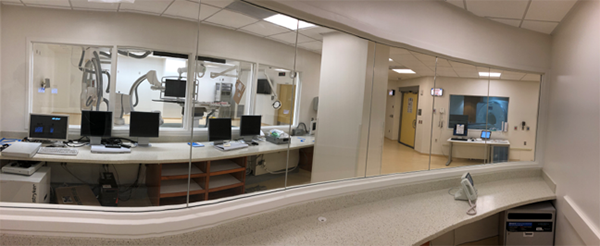What Does It Mean to Be A JCAHO Comprehensive Stroke Center?
UC San Francisco is the only JCAHO Comprehensive Stroke Center in San Francisco. What does this mean? According to Steven Hetts, MD, chief of Interventional Neuroradiology at the UCSF Mission Bay Hospitals, this means that we have extensive capabilities in neurology, neurosurgery, diagnostic neuroradiology and interventional neuroradiology to diagnose and treat all types of strokes. These include both ischemic strokes due to a lack of blood flow to the brain and hemorrhagic (bleeding) strokes due to brain aneurysms, high blood pressure, arteriovenous malformations (AVMs) or other vascular abnormalities.
There are extensive research programs in stroke at UCSF Parnassus, UCSF Mission Bay, Zuckerberg San Francisco General Hospital & Trauma Center (ZSFG), and the San Francisco VA Medical Center (SFVAMC). “At ZSFG, for example, we have the world's best facility to treat an acute stroke, as we have combined a biplane x-ray angiography suite and a 3T MRI scanner in a single operating room,” explains Dr. Hetts. “We can do all diagnosis and therapy in a single location and anticipate that will lead to better stroke outcomes. In addition, we run a core imaging laboratory through the UCSF Interventional Radiology Research Laboratory at China Basin, analyzing the effectiveness of brain aneurysm treatment devices in clinical trials conducted around the world.”

Dr. Hetts is joined by a team of six interventional neuroradiologists including Randall Higashida, MD, chief of Neurointerventional Radiology, and faculty members Matthew Amans, MD, Daniel Cooke, MD, Christopher Dowd, MD and Van Halbach, MD. In their field, they diagnose and treat blood vessel abnormalities from inside the blood vessels. This group has pioneered several techniques in the treatment of ischemic stroke, brain aneurysm, and brain vascular malformations over the past 35 years at UCSF. They all treat ischemic strokes, brain aneurysms, AVMs and dural arteriovenous fistulas (dAVFs) and also have additional subspecialized interests.
When asked about the types of therapies UCSF provides for patients with stroke, cerebrovascular disease and tumors, Dr. Hetts says that for large arteries in the brain that are acutely occluded by a blood clot (embolus), an interventional neuroradiologist will remove that blood clot through the blood vessel in a process called mechanical thrombectomy. “For aneurysms and malformations that have bled or are at risk for bleeding, an interventional neuroradiologist will perform embolization (sealing off of blood vessels),” Dr. Hetts explains. “For vessels that are too narrow, angioplasty and stenting is performed. For tumors either embolization or specialized intra-arterial chemotherapy is performed.”
“For diagnosis and therapy for strokes, interventional neuroradiologists use digital subtraction catheter angiography (DSA, x-ray angiography) to diagnose cerebrovascular abnormalities,” says Dr. Hetts. “Also, they use endovascular techniques through catheters to operate on a variety of conditions in the brain and spine through tiny access sites at the femoral, radial, or other peripheral arteries or veins.”
“We have the world's best facility to treat an acute stroke, as we have combined a biplane x-ray angiography suite and a 3T MRI scanner in a single operating room. We can do all diagnosis and therapy in a single location and anticipate that will lead to better stroke outcomes,” says Dr. Hetts. “Although this facility is at ZSFG, lessons we learn there can be translated to x-ray angiography suites at UCSF as well as other facilities throughout the world.”
What’s next for new imaging, therapy techniques or technology? According to Dr. Hetts, the team is working on building and testing catheters that are safe for x-ray and MRI, thus allowing diagnosis and treatment in multimodality suites. Also, they are investigating the potential for robotic surgery as well as better systems of care in collaboration with partner regional hospitals and other UC medical centers.
Through a multidisciplinary effort with partners in the departments of Neurology, Neurosurgery, and Diagnostic Neuroradiology, the Neuro Interventional Radiology Clinical Section is committed to making San Francisco the safest place to have a stroke.
